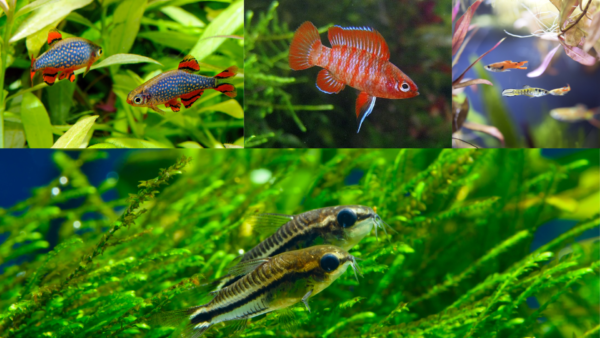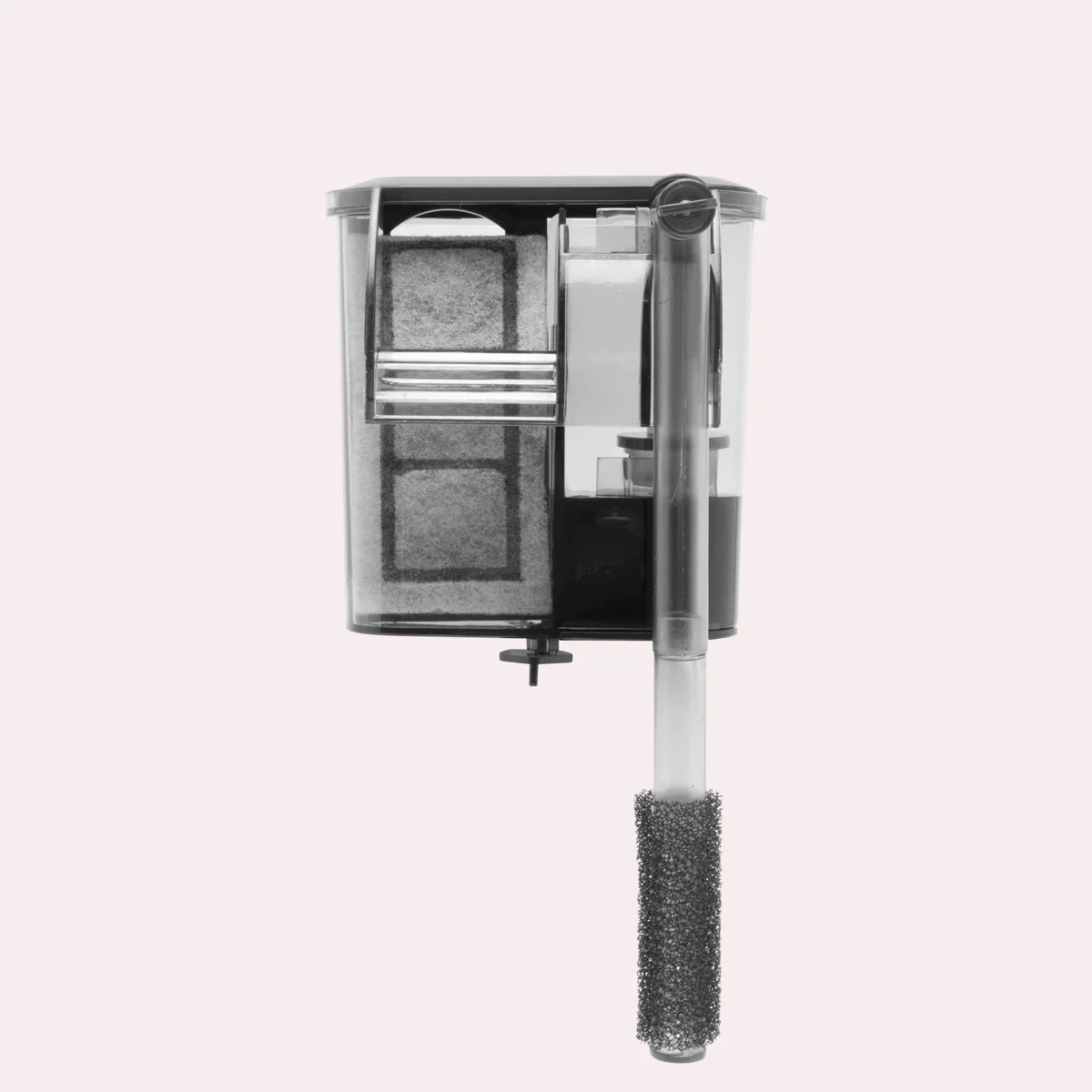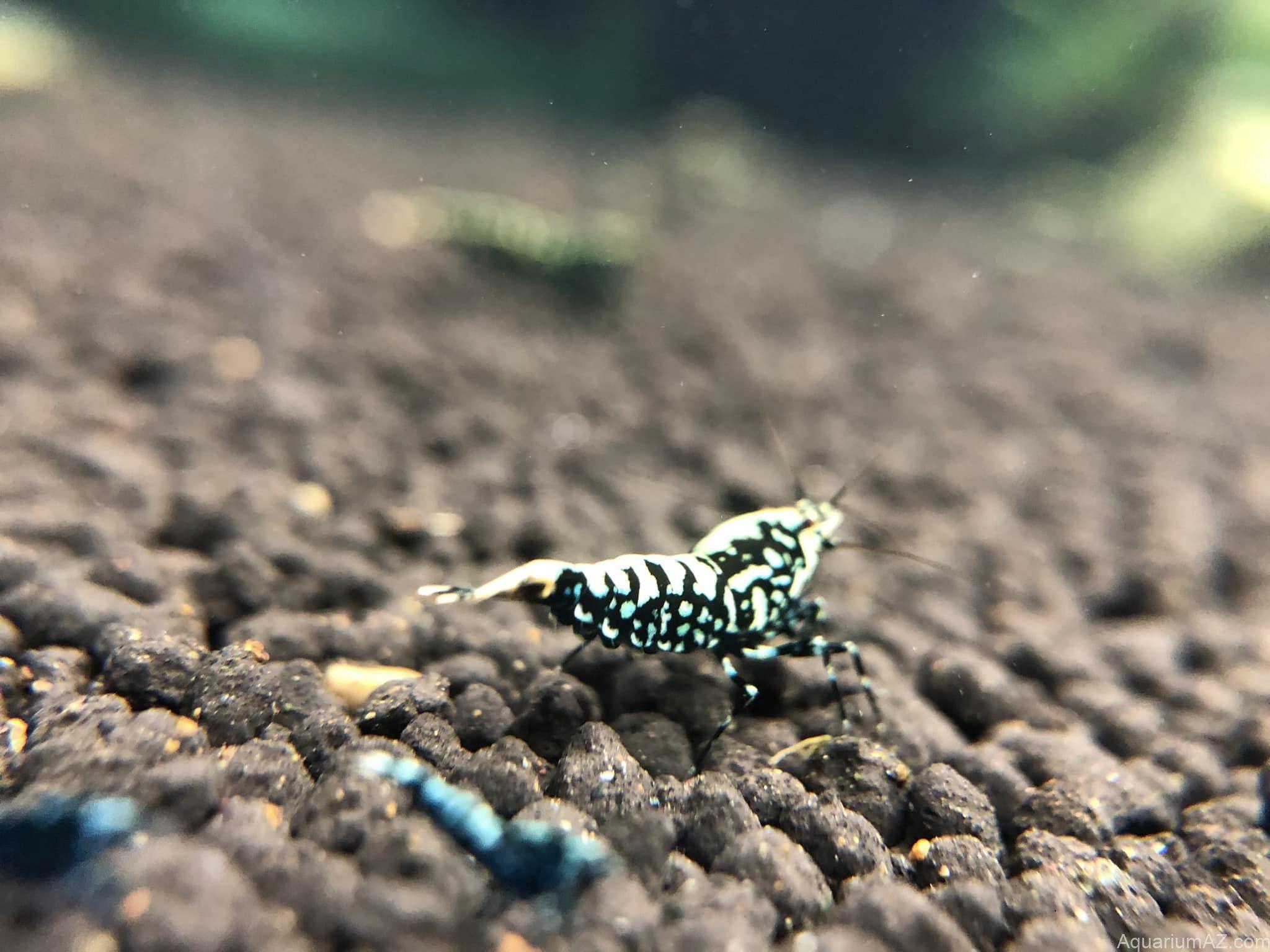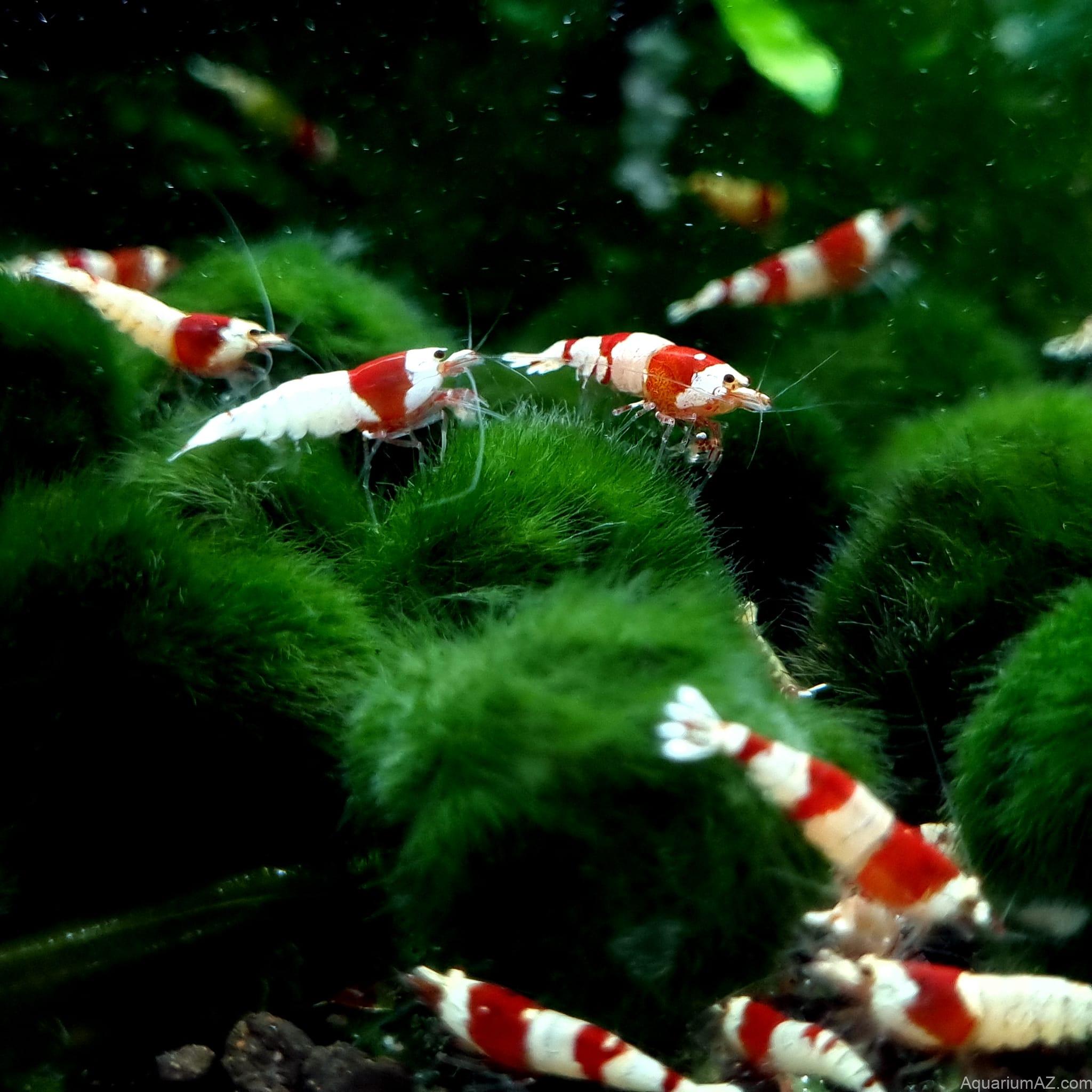The Essential Equipment for Your Freshwater Shrimp Tank
Before diving into the world of shrimp tanks, it’s crucial to determine the essential requirements for a successful setup. The most significant aspect to begin with is selecting the appropriate tank.
Shrimp Tank Size
When it comes to shrimp tanks, size matters for stability. Smaller tanks are prone to parameter and temperature fluctuations, which can harm shrimp. These delicate creatures prefer a stable environment. Additionally, a larger tank is essential for breeding shrimp and accommodating offspring.
Consider the ideal tank size. Going too big may make the shrimp appear insignificant, so aim for a sweet spot of 20-29 gallons, with a maximum limit of 40 gallons. A 2-foot long tank is a cost-effective option.
If opting for a used tank, exercise caution. Avoid tanks treated with copper, as it can leach into the water and harm the shrimp. Ensure that any used tank you purchase has never been treated with copper for long-term success.
Shrimp Tank Filtration
When it comes to filtration in freshwater shrimp tanks, it’s important to consider the delicate nature of shrimp and the need to protect shrimp fry. Standard filters can pose a risk by sucking up baby shrimp and even adults. Fortunately, there are modifications you can make to prevent this. Here are some popular options:
- Sponge Filter: Affordable, easy to use, and safe for shrimp. Many breeders prefer sponge filters for their simplicity and effectiveness.
- Hang On Back (HOB) Filter: Also known as power filters, these are great choices. However, you’ll need to modify the intake to avoid accidents. Adding a sponge pre-filter to the intake will help prevent any shrimp losses.
Canister filters are typically considered overkill for freshwater shrimp tanks, while internal filters can be suitable but sponge filters are a reliable choice.
Tank Substrate
When it comes to aquarium substrate, there are two main options to consider: inert or active substrate. Inert substrate has no impact on water parameters but requires additional supplementation for plant growth. Active substrate, on the other hand, is better suited for shrimp that prefer softer water, such as Caridina shrimp. It also provides nutrients to rooted plants through the substrate. If you opt for active substrate, Ultum Nature Systems Controsoil is recommended choices designed specifically for freshwater shrimp.
Keep in mind that using active soil will prolong the cycling process. It releases a significant amount of ammonia initially, which can be harmful to shrimp. Exercise patience during the cycling phase and introduce shrimp only when water parameters have stabilized.
Shrimp Friendly Plants
Anubias is an excellent choice for beginners due to its hardy nature and resistance to fish and invertebrate interference.
When it comes to creating a thriving planted tank for freshwater shrimp, there are several suitable options to consider. These plants work well alongside your shrimp inhabitants:
- Anubias (Water Column Feeders)
- Java Moss (Water Column Feeders)
- Java Fern (Water Column Feeders)
- Moss Balls (Water Column Feeders)
- Crypts (Rooted)
- Rotalas (Rooted)
- Christmas Moss
- Duckweed & Water Lettuce (Floaters)
If you have an active substrate, you can also consider carpet plants like Monte Carlo. Duckweed and Rotalas play a crucial role in protecting your shrimp from high nitrate spikes, as they thrive when nutrient levels are elevated. Remember to stay vigilant in pruning and removing decaying leaves to prevent the accumulation of organic matter in your aquarium.
Lighting for Shrimp Tank
When it comes to lighting for freshwater shrimp, simplicity is key. A decent Planted Tank LED system will suffice for housing the main listed plants.
Water Parameters
When it comes to shrimp keeping, there are several key parameters to monitor:
- Ammonia
- Nitrite
- Nitrate
- pH
- GH
- KH
- TDS
Initially, it is crucial to measure ammonia and nitrite levels. As your tank matures, nitrate levels become more significant. Regular testing of pH, GH, and KH is necessary to maintain stability for your shrimp. Additionally, TDS (total dissolved solids) is a new parameter to consider. High TDS levels can adversely affect shrimp health, and different shrimp species have specific TDS range requirements. Refer to the chart below for TDS guidelines.
| Name | Optimal TDS | Limits |
| Bamboo Shrimp | 150 – 200 | 100 – 300 |
| Snowball Shrimp | 150 – 200 | 80 – 300 |
| Ghost Shrimp | 150 – 200 | 100 – 400 |
| Amano Shrimp | 150 – 200 | 100 – 400 |
| Cherry Shrimp | 150 – 200 | 100 – 400 |
Parameters for Neocaridina shrimp:
- pH: 6.5 – 7.5
- KH: 1-4
- GH: 6-8
- TDS – 80-200
- Water Temp: 65 – 73 F
Parameters for Caridina shrimp:
- pH: 6.2 – 6.6
- KH: 2-6
- GH: 4-8
- TDS: 80-100
- Water Temp: 70 – 73 F
Please note that these are general guidelines, and specific Caridina shrimp and their bee varieties may have different ideal parameters. It is essential to conduct thorough research and gather specific information for the particular shrimp species you plan to keep. This will ensure that you provide the optimal conditions for their well-being.
Freshwater Shrimp Sourcing Selections
When it comes to purchasing freshwater aquarium shrimp, the source plays a crucial role in your success. There are two options: importing shrimp or acquiring homebred ones.
Imported shrimp are typically available at local fish stores, but it’s important to understand the sourcing cycle and potential challenges. The process involves multiple distributions, increasing stress and the risk of diseases. Imported shrimp are often larger in size, which can make it difficult for them to adapt to captivity. It’s common for imported shrimp to experience die-off during shipping.
On the other hand, homebred shrimp are generally hardier. They are accustomed to captivity and less susceptible to diseases. However, it’s important to consider the experience of the breeder and the shrimp’s lineage. Opting for locally bred shrimp is often a better choice, as they are raised in similar water conditions (e.g., tap water). Look for reputable breeders through local aquarium societies and social media groups.
By choosing the right source for your shrimp, you increase the likelihood of success in your aquarium.
Pests in Shrimp Tank
Freshwater aquarium shrimp can be prone to pests, often introduced through purchased freshwater plants. The key pests to watch out for include:
1. Planaria: These flatworms pose a threat to shrimp as they prey on them. To eliminate planaria, you can use a Planaria Trap or opt for No Planaria medication.
2. Hydra: These small aquatic organisms can sting and poison shrimp, leading to their demise. No Planaria medication can also be used to treat hydra infestations.
3. Scuds: These pests are particularly harmful to newborn shrimp and are commonly hitchhikers on live plants. Manual removal is the most effective method, as scuds reproduce rapidly. Alternatively, introducing Betta fish or Killifish can help control scud populations, as they feed on them. However, be cautious with Betta fish in shrimp tanks, as they may pose a risk to the shrimp themselves. Some aquarists prefer temporarily removing shrimp, introducing the Betta to eliminate scuds, and then reintroducing the shrimp afterward.
4. Dragonfly Nymphs: These aggressive predators relentlessly hunt and devour shrimp. Manual removal is the recommended approach, as other methods may harm the shrimp.
Prevention is the best strategy for dealing with pests. Consider dipping your plants in a diluted bleach solution (19 parts water to 1 part bleach) and rinsing them with water conditioned with Prime before introducing them to your aquarium. Alternatively, you can quarantine new live plant additions to ensure they are free from pests before introducing them to the shrimp tank. By being proactive, you can minimize the risk of pest infestations in your aquarium.
Compatible Shrimp Tank Mates
If you’re considering adding fish to your shrimp tank, it’s important to choose species that are compatible and won’t prey on the shrimp. Keep in mind that fish are likely to eat shrimp babies, so breeding may not be successful. However, selecting larger shrimp species like Amano can increase the chances of coexistence. Here are some small fish options suitable for a shrimp tank:
- Neon Tetra
- Small Tetras (e.g., Neon Tetras)
- Bottom-dwelling fish like Pygmy Corys
- Harlequin Rasboras
- White Cloud Minnows
- Glassfish

These fish are known to generally coexist peacefully with shrimp, but individual behavior can vary. It’s important to observe their interactions closely and ensure the tank provides sufficient hiding places and ample space for both the fish and shrimp to thrive.
Baby And Adult Shrimp Feeding
To ensure the success of your shrimp tanks, it’s important to provide a combination of natural and prepared food. One of the key natural food sources for shrimp is biofilm, which is a bacterial structure that grows on various surfaces. Shrimp will graze on this biofilm in the aquarium. You can encourage biofilm growth by having surfaces like sponge filters, leaf litter, mosses, and rocks in your tank. Additionally, providing “permanent food” such as Cholla Wood can be beneficial.
Using a feeding tray is highly recommended when feeding your shrimp. This helps prevent excess food from getting lost in the substrate and keeps your aquarium free from food debris. It also provides a convenient way to observe your shrimp while they feed.
Tank Maintenance
Shrimp tanks require diligent maintenance due to the sensitivity of shrimp to parameter changes. Since many shrimp tanks are smaller in size, they are more susceptible to these changes.
Water quality is crucial for shrimp. They are particularly sensitive to ammonia, nitrite, and high levels of nitrate. Regular weekly water changes are essential in shrimp tanks. Additionally, water evaporation can lead to parameter fluctuations. When topping off evaporated water, it’s important to use pure replacement water such as RODI water or distilled water to maintain stable parameters.
In terms of maintenance tasks, cleaning the filter once a month is recommended. Use the pulled tank water to rinse the filter media, ensuring the removal of debris while preserving the beneficial bacterial colonies. Sponges can last a long time and should only be replaced if absolutely necessary. If replacement is required, it’s best to seed the new sponge beforehand to prevent a loss of bacterial colonies.
It’s crucial to exercise caution when placing your hands in the shrimp tank. Shrimp are highly sensitive to toxins. Substances like detergents, chemicals on plants, flea treatments, flea shampoo, and cleaners pose a risk to shrimp. Always ensure you wash your hands thoroughly before handling anything in the tank to avoid introducing harmful substances.
Problems – Shrimp Die
Shrimp tanks come with their fair share of challenges. Let’s discuss some of these challenges and how to address them.
Water Parameter Stability
Maintaining stable water parameters is crucial for shrimp. Regularly testing the water using test kits and a TDS meter is recommended. Make it a habit to test your water on a weekly basis.
Cycling the Shrimp Tank
Shrimp are highly sensitive to ammonia, so it’s important to ensure that the tank is properly cycled before introducing them. If you’re using active substrate like ADA Aquasoil, be aware that it can release ammonia initially. Allow the substrate to settle for about two months before adding shrimp.
Molting Problems
Molting issues are common in beginner shrimp tanks and can indicate a lack of iodine. Most staple and powdered foods contain iodine, but you can also consider using montmorillonite material powder, which can be purchased online, to supplement iodine in the tank.
Shrimp Gender Imbalance
Having an imbalance of males to females can lead to problems in the shrimp population. An excess of males can stress and harass females, potentially causing their death. If you notice a rapid decline in female shrimp, consider removing some males to restore a balanced ratio.
Pest Control
Pests pose a significant threat to shrimp tanks. To prevent nuisance pests, consider using a bleach dip method.
Water Toxicity
Toxins, especially copper, can be deadly to shrimp. Ensure that any fertilizer you use is shrimp-safe and free of copper.
Source Water Quality
Source water quality is crucial. Tap water treated with a dechlorinator is generally suitable for freshwater tanks. However, for more sensitive shrimp species like Caridina, better-quality source water may be necessary. Tap water may contain copper and high nutrient levels, which can be harmful to shrimp. RODI (Reverse Osmosis Deionization) water, with 99% purity, is ideal for sensitive shrimp species. When using RODI water, remineralize it with a suitable supplement during water changes to provide the necessary elements for shrimp health.
High Mortality of Baby Shrimp
If a large number of baby shrimp are dying, it may indicate insufficient biofilm as a food source. Enhance the biofilm in your tank by adding more rocks, mosses, and leaf litter. Additionally, consider using powdered food to ensure adequate nutrition for the babies.
Shrimp Lifespan
Shrimp have relatively short lifespans, typically living 6-12 months in an aquarium. However, they are prolific breeders. Keeping a single variety of shrimp is important to avoid hybridization over time due to rapid generational turnover.
Conclusion
Freshwater shrimp tanks offer a unique and engaging experience, particularly for beginners who choose larger shrimp species. These tanks present various challenges suitable for all skill levels, making it an exciting endeavor to maintain a thriving breeding population.
Keeping shrimp tanks can be incredibly enjoyable, and their compact size provides a cost-effective alternative compared to maintaining larger aquariums.





